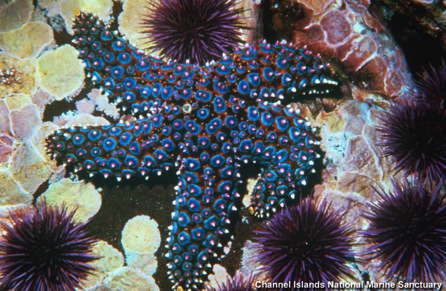
Sea urchins and other echinoderms are a useful model system for studying many problems in early development. Historically, sea urchins were a key model system in elucidating a variety of classic developmental problems, including the mechanisms of fertilization and egg activation, cleavage, gastrulation, and the regulation of pattern formation in the early embryo. In addition, early studies of the the molecular basis of early development were carried out in this system. Gametes can be obtained easily, sterility is not required, and the eggs and early embryos of many commonly used species are beautifully transparent. In addition, the early development of sea urchin embryos is highly synchronous, i.e., when a batch of eggs is fertilized, all of the resulting embryos typically develop on the same time course. This makes biochemical and molecular studies of early embryos possible in this system, and has led to a number of major discoveries.
 The giant-spined star
(Pisaster
giganteus)
and purple sea urchins (Strongylocentrotus
purpuratus).
Image courtesy of Channel Islands National Marine
Sanctuary.
The giant-spined star
(Pisaster
giganteus)
and purple sea urchins (Strongylocentrotus
purpuratus).
Image courtesy of Channel Islands National Marine
Sanctuary.